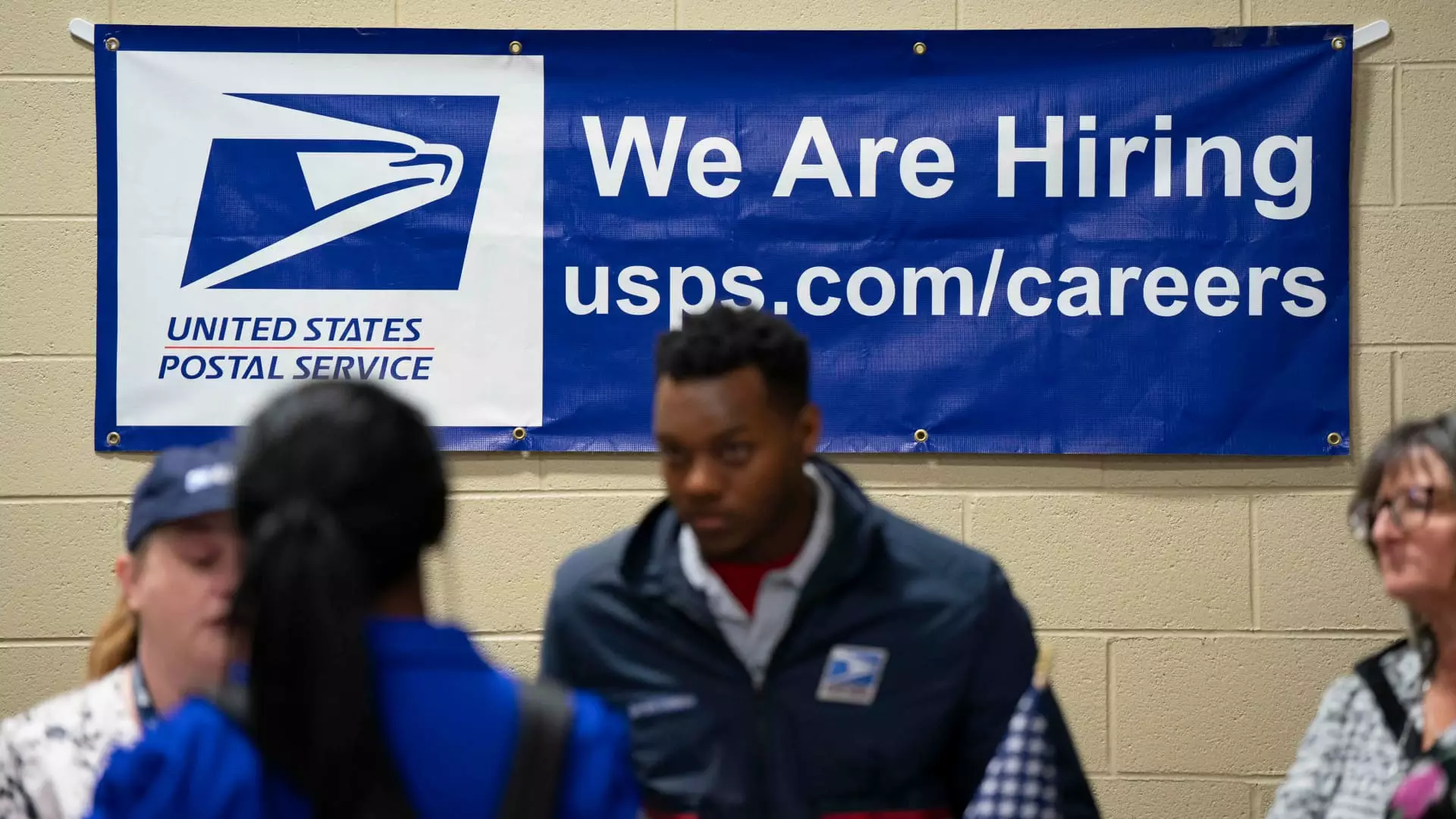The latest report from the Bureau of Labor Statistics paints a complicated picture of the U.S. labor market in May, revealing a paradox that deserves closer scrutiny. While nonfarm payrolls experienced a notable increase of 139,000 jobs—outpacing the tepid expectations set forth by economists—the broader landscape is far less serene. The heady 4.2% unemployment rate seems encouraging on the surface, but beneath these numbers lies a worrying trend. The growth is more an apparition of resilience than a robust foundation, masked by recent downward revisions of prior months’ job records which serve as a stark warning: the economic momentum is frailer than leaders would like us to believe.
Observers of the labor market will find it difficult to celebrate when they consider that near half of May’s job gains were concentrated in health care—a sector that has consistently outperformed due to demographic shifts and rising demand for services. The stability of job growth in this sector might be seen as a double-edged sword; while it signifies need, it also highlights a lack of diversification in job creation. Sectors like leisure, hospitality, and social assistance contributed significantly as well, yet such industries are often seen as vulnerable to economic downturns owing to their discretionary nature. What is striking is the government sector’s loss of 22,000 jobs, an indicator that the Trump administration’s policies—aimed heavily at reducing the federal workforce—are beginning to take hold, albeit at a cost.
The Dichotomy of Data
It is critical to analyze not only the quantities but also the quality of employment as we sift through these numbers. The dichotomy between the establishment survey and household survey raises eyebrows. The household survey, known for its volatility, revealed a staggering drop of 696,000 individuals employed. The troubling statistic that full-time positions plummeted by 623,000, while part-time roles subtly edged up by 33,000, casts a shadow over claims of employment recovery. Are we witnessing a job market that is merely shifting from full-time stability to part-time instability? This is a question that policymakers and economists must confront head-on.
The cautious optimism is tinged with an undeniable anxiety. “The May jobs report still has everyone waiting for the other shoe to drop,” lamented economist Daniel Zhao. As he rightly points out, while the job market might appear robust, the cumulative economic turbulence stemming from tariffs and unpredictable trade policies create a precarious situation. It’s as if we are on the cusp of a change, teetering on a precipice where a single shift could send the labor market spiraling into uncertainty.
The Tariff Conundrum
The ongoing effects of tariffs, instituted largely to “level the playing field” in international trade, add another layer of complexity to an already intertwining narrative. The looming specter of increased inflation, driven by these tariffs, is unable to be ignored. While most economic indicators maintain a sense of optimism, anxiety spreads among consumers and business leaders alike. A collective fear is palpable as everyone braces for potential disruptions in the business cycle and the subsequent implications on employment.
Federal Reserve officials, keenly aware of the potential fallout, are adopting a cautious approach. With an upcoming policy meeting, there is a consensus that interest rates are likely to be held steady. Yet, there are murmurings of concern regarding the inflationary pressures that tariffs may engender, which could ripple through the economy, further complicating recovery efforts. Solving this economic puzzle requires not only careful monitoring but also strategic action, a task that demands clarity and resolve from those in power.
A call for Empathy and Responsiveness
The complexities underlying these job growth statistics call for a more empathetic and responsive approach to economic policy. The illusion of resilience must be dismantled, revealing a labor market that is not merely holding steady, but potentially vulnerable to external shocks. Policymakers must prioritize creating an environment that nurtures sustainable job growth across a variety of sectors while taking into account the precarious conditions instigated by tariffs. The American workforce deserves not just jobs, but jobs that ensure stability, fulfillment, and the hope for a better future.

Leave a Reply